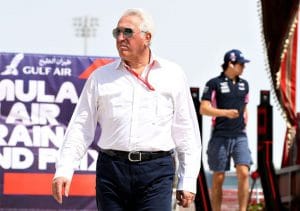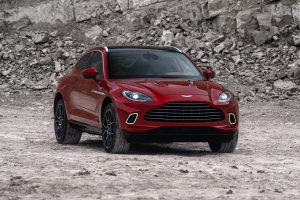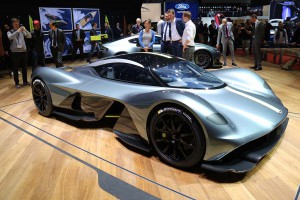When Andy Palmer came onboard as the new Aston Martin CEO in 2014 he quickly outlined an aggressive product plan that included the revival of the long-dormant Lagonda brand in all-electric form.
Now, however, the British marque is tearing up Palmer’s playbook. As part of the bailout announced last week, Canadian billionaire Lawrence Stroll, Aston’s new chairman, wants the relaunch of Lagonda – along with other EVs – pushed back until at least 2025, Palmer confirmed. On the plus side, Stroll’s cash will help ensure that other key models, such as the Valkyrie supercar, will make it into production within the coming year.
“Our Lagonda strategy is not dead,” Palmer told Auto Express magazine. “It’s just delayed.”
(Canadian billionaire takes 16.7% stake in Aston Martin)
All told, Palmer had his sights set on introducing seven distinct product lines as part of his ambitious plan, an effort that debuted with the debut of the DB11 at the 2016 Geneva Motor Show.

Canadian billionaire Lawrence Stroll paid 182 million pounds, or $240.2 million, for a 16.7% stake in Aston Martin.
As each new product has come to market, Aston’s sales have soared – but not quite as much as Palmer, a former Nissan executive, had promised. After trimming back his forecasts last year, the British marque’s stock tumbled, with growing concerns about whether it could come up with the funding for all the products it was developing.
Now, it seems, Stroll has pressured Palmer’s team to prioritize what comes to market – and when. His hefty cash infusion – about $240 million, for a 16.7% ownership stake – helps put the launch of the Valkyrie back on track for later this year, according to Palmer, with the even more outrageous Valkyrie AMR Pro set to follower it in 2021.
Ans there will be many of the special editions that Aston has been working up, such as the Goldfinger DB5 Continuation and the V12 Speedster.
(China’s Geely sniffing around British luxury maker Aston Martin)
But something apparently had to give and Aston is temporarily unplugging its electric vehicle program. That may come as a surprise, at least when it comes to the Rapide E program which swapped out the stock engine in Aston’s four-door Rapide for an all-electric driveline. The limited-edition model was supposed to go into production this year but has now been “paused,” according to Palmer.

Aston Martin is counting on the DBX will be its best-selling model ever and more than double the brand’s current global sales.
Exactly when it will come to market is unclear but Palmer said that other all-electric projects are pushed back until at least 2025. That specifically means we won’t see anything wearing a Lagonda badge until mid-decade. The CEO’s original plan had called for two different models under that revived brand, starting with an SUV due out in 2022. Significantly, all future Lagonda products were to be all-electric.
The delay clearly suggests that Stroll wants Aston to put its money where it knows there’s a market. Though there is, if you will, a lot of energy in the luxury EV space, it is yet far from certain there’s an actual market. While the incredible performance offered by electric motors is a definite plus, Aston is by no means the only high-line manufacturer rethinking its timetable.
While pure electric models may be delayed, Aston isn’t walking away from battery power entirely, however. Palmer told Auto Express that the automaker is moving ahead on development of a V-6 hybrid that will eventually be offered in every model in its line-up.
(Q&A: Aston Martin CEO Andy Palmer)
Hybrids have already proven they have a place in the luxury and performance segments thanks to products like the Ferrari La Ferrari. Look to see the Aston Martin gas-electric driveline reach production around 2022.

